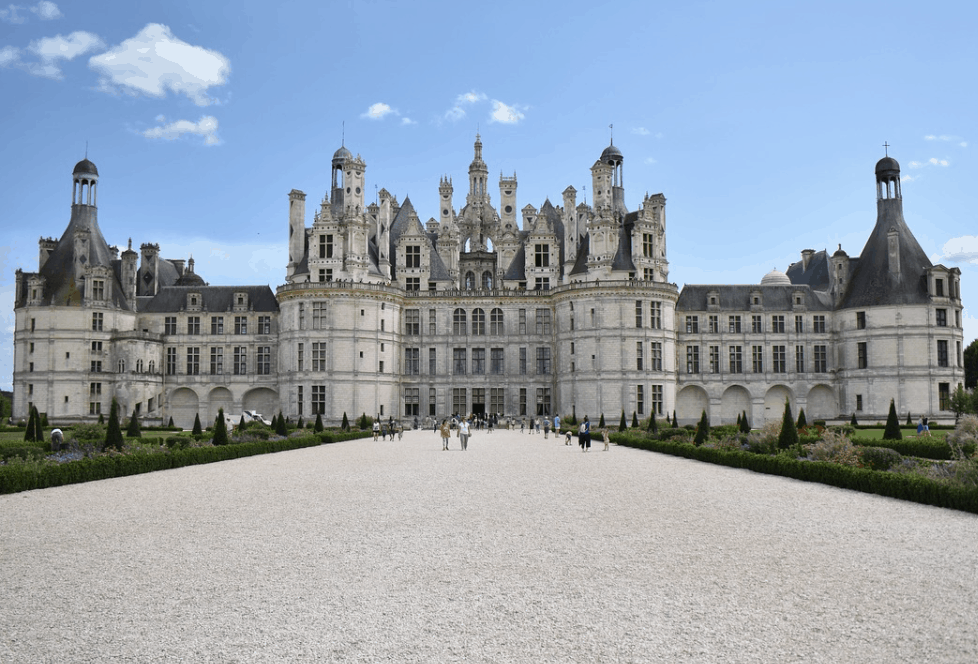It’s one of the most magnificent castles in Europe with quite a few interesting stories to tell.
In this post, you’ll discover the ultimate list of facts about the Château de Chambord in France.
1. It’s the largest château in the Loire Valley
If you’re interested in amazing-looking castles, then there’s hardly any better place than the Loire Valley. Over 300 châteaux can be found in this area just southwest of Paris and which has been declared a UNESCO Heritage site since 2000.
Famous castles include the Château d’Amboise, a royal castle extensively used by the French Monarchy, and the Château de Montsoreau, a Renaissance castle directly built in the Loire riverbed.
Of all these castles, the Château de Chambord is the largest!
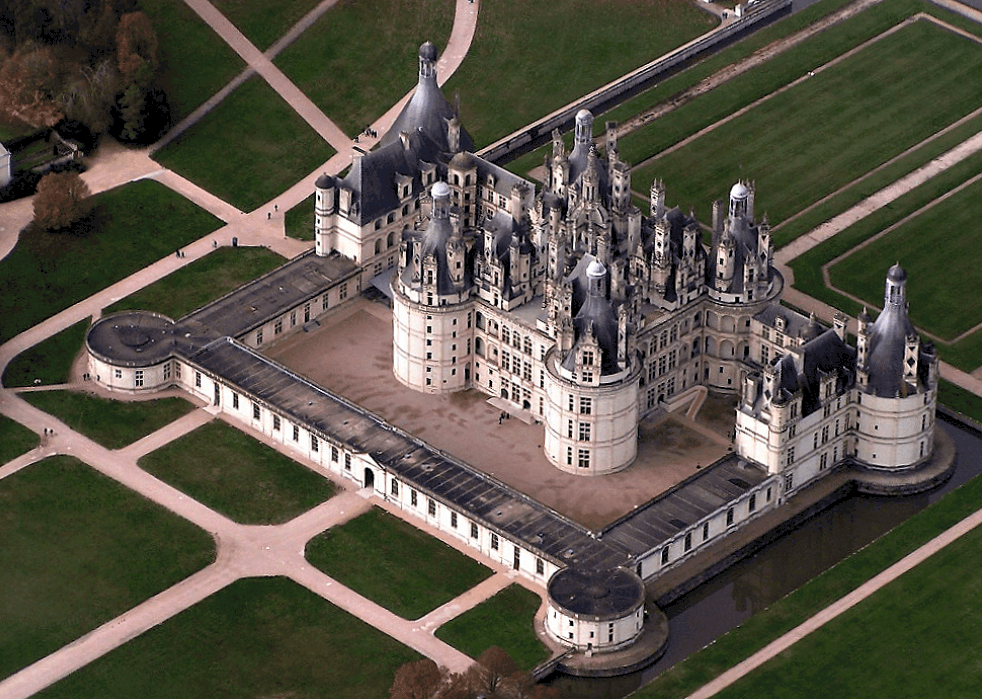
2. The château has well over 400 rooms
To emphasize the fact that the Château de Chambord is huge, we can simply look at the number of rooms it has. The château features 440 rooms, 282 fireplaces, and 84 staircases!
It’s also surrounded by an area of 52.5 square kilometers (13,000 acres) consisting of woodlands that serves as a reserve for red deer. This area is enclosed by a 31-kilometer (19-mile) long wall.

3. It has the layout of a medieval castle
One of the most interesting facts about the Château de Chambord is that its overall design resembles that of a medieval castle, but the château itself was never intended to provide any form of defense.
This simply means that the medieval elements such as the keep, corner towers, walls, and moat, are purely decorative.
The château was even intended to be decorated with two additional walls, but these were never completed, even though the foundations had already been established.
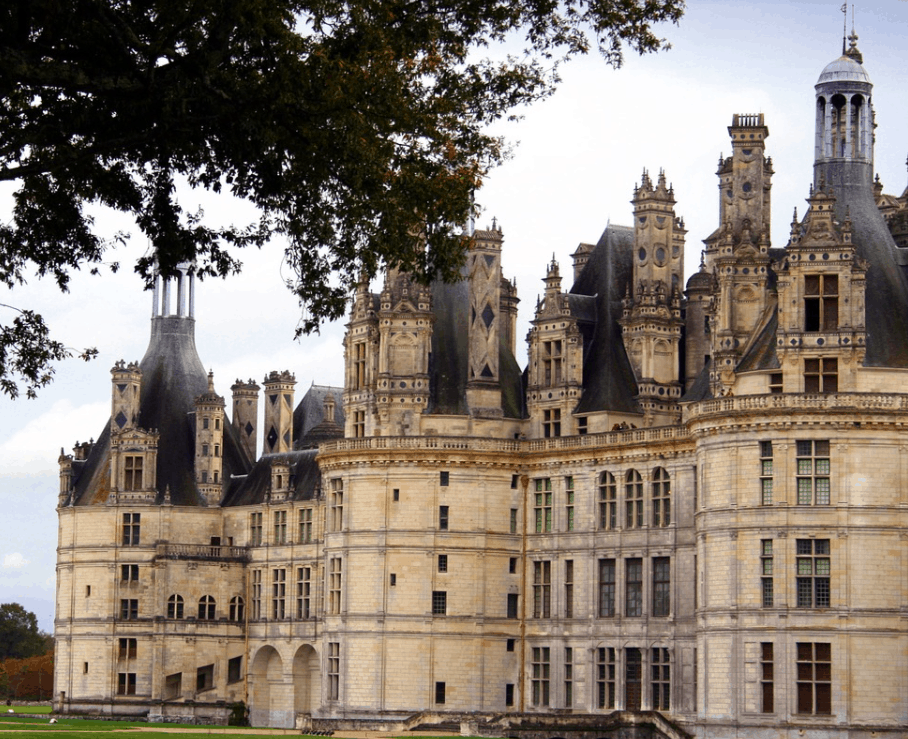
4. It’s the epitome of French Renaissance architecture
The château is one of the most prominent examples of the distinctive French Renaissance architectural style. It mixes medieval elements with the prominent classical Renaissance style.
It’s no surprise then that it’s assumed that the main architect of the project was an Italian named Domenico da Cortona, who clearly influenced its design. It’s unclear if he was alone but it’s also assumed that the on-site supervision was led by Pierre Nepveu.
A wooden model made by the Italian architect survived until the 17th century and was drawn by André Félibien.

5. The roofline of the château is extremely chaotic
The façade of the château is huge, measuring about 128 meters (419 feet) long. It contains over 800 sculpted columns and the roofline is what you can describe as chaotic and lacks the typical spires and turrets that can be found in other structures built in the 16th century.
The main reason is that King Francis I wanted the roofline to look like the skyline of Constantinople.
Famous writer Henry James describes the roofline as: “the towers, cupolas, the gables, the lanterns, the chimneys, look more like the spires of a city than the salient points of a single building.”
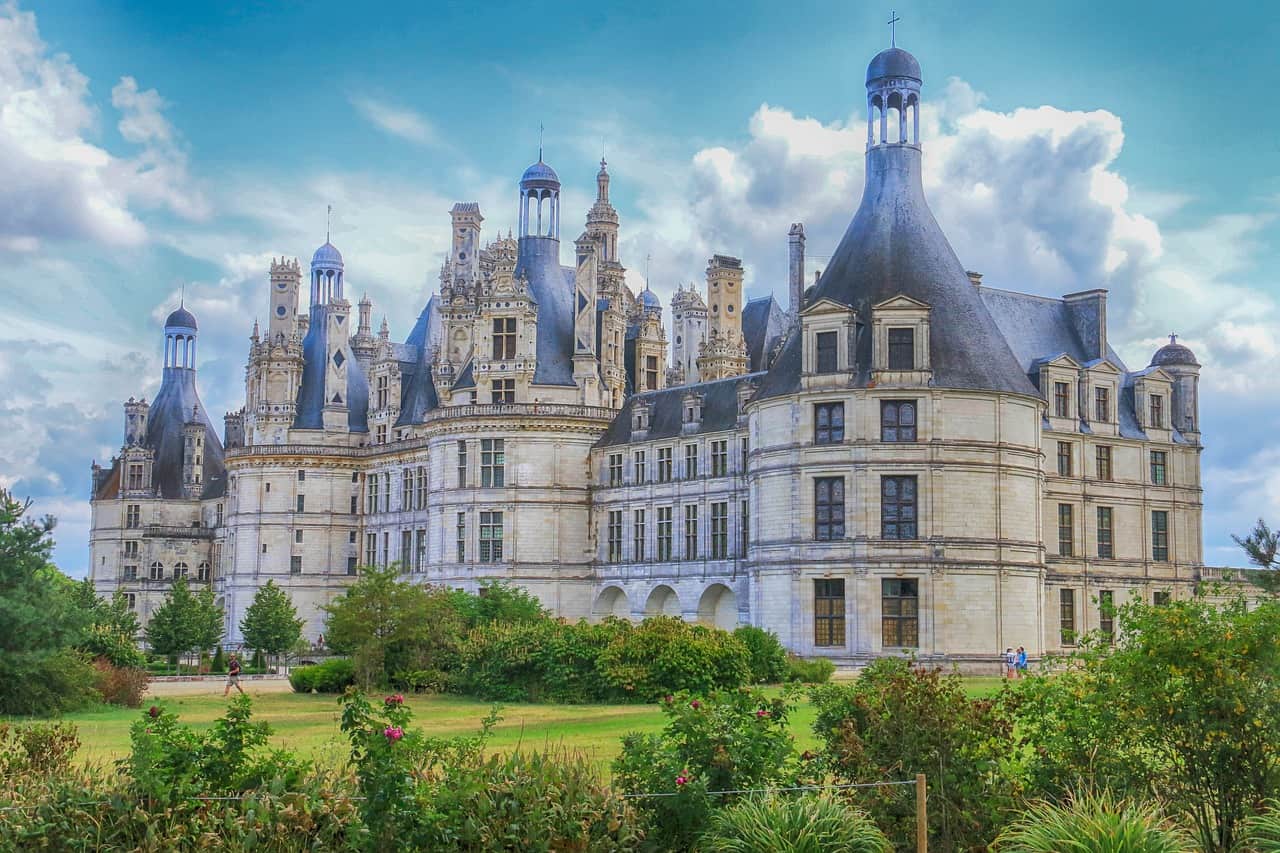
6. The centerpiece of the château is a special type of staircase
One of the most remarkable facts about the Château de Chambord is that it features one of the most amazing staircases in the world. This double-spiral staircase consists of 2 spirals which allow visitors to reach the third floor without ever meeting.
This means that 4 people could be ascending or descending the staircase, which is illuminated by a source of light coming from the top of the château, and never meet each other until they reach the end of the 274 steps.

7. Did Leonardo da Vinci have a stake in its design?
Once upon a time in 1515, Leonardo da Vinci entered the service of King Francis I of France. With the Mona Lisa under his arm, which would become his most famous painting, he traveled to France and was allowed to stay at the manor house “Clos Lucé,” near the massive royal Château d’Amboise where the king lived.
It would be his last journey because he died just 4 years later in 1519.
Most historians agree that da Vinci had a stake in the design of both the château itself and the remarkable staircase, but neither theory can be confirmed.
What’s remarkable though is the fact that da Vinci’s notebooks were filled with similar architectural sketches as the spiraling staircase and a feature like this had never been seen in France before its construction.
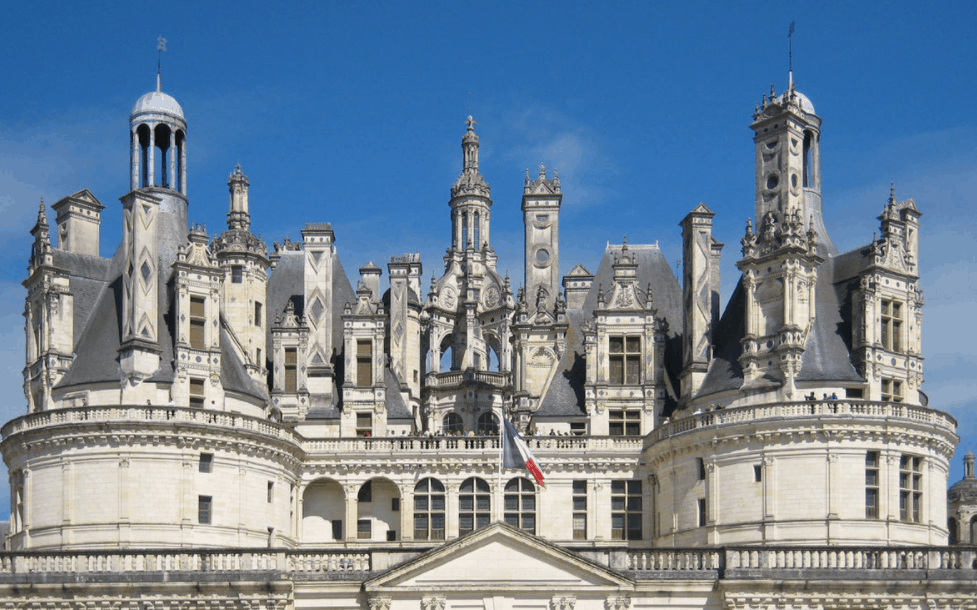
8. It was commissioned by Francis I to serve as a hunting lodge
One of the most amazing facts about the Château de Chambord is that this massive castle was never intended to become the king’s residence, who used the Châteaux de Blois and Amboise instead. He commissioned the château with the sole purpose to become his hunting lodge.
That’s quite remarkable considering it has over 440 rooms, don’t you think?
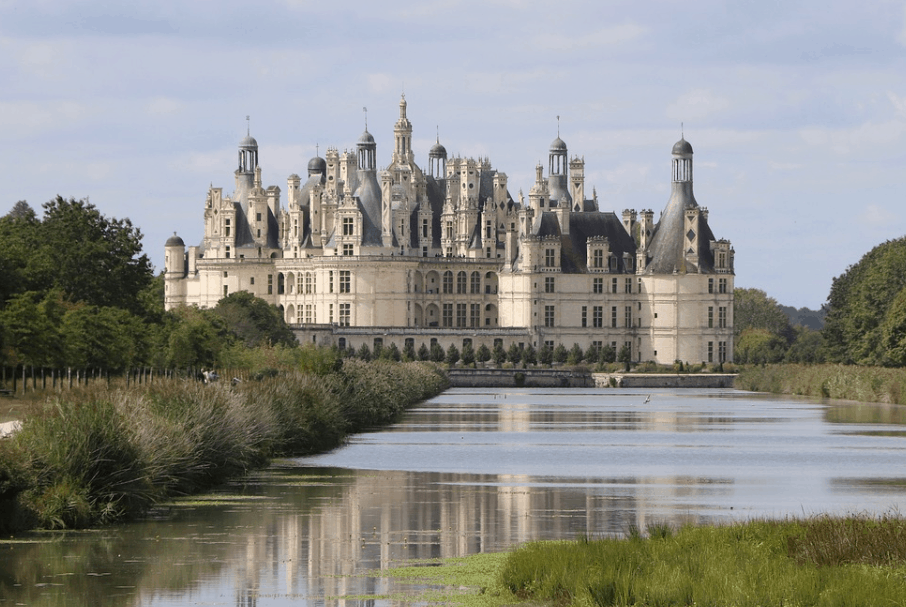
9. Château de Chambord was completed the year that the king died
Just imagine the sheer scale of this project. Construction of the château officially started on September 6, 1519, and by 1526, over 1,800 workers were working on the site every single day.
This doesn’t mean progress was quick, though, because construction was halted by the Italian War of 1521–1526, which also resulted in a lack of funds. By 1524, the first floor was barely erected and the castle wouldn’t be completed until the year 1547!
Unfortunately, this was the year that King Francis I died of a heart attack. By then, he had spent exactly 444,070 livres on this project as well!
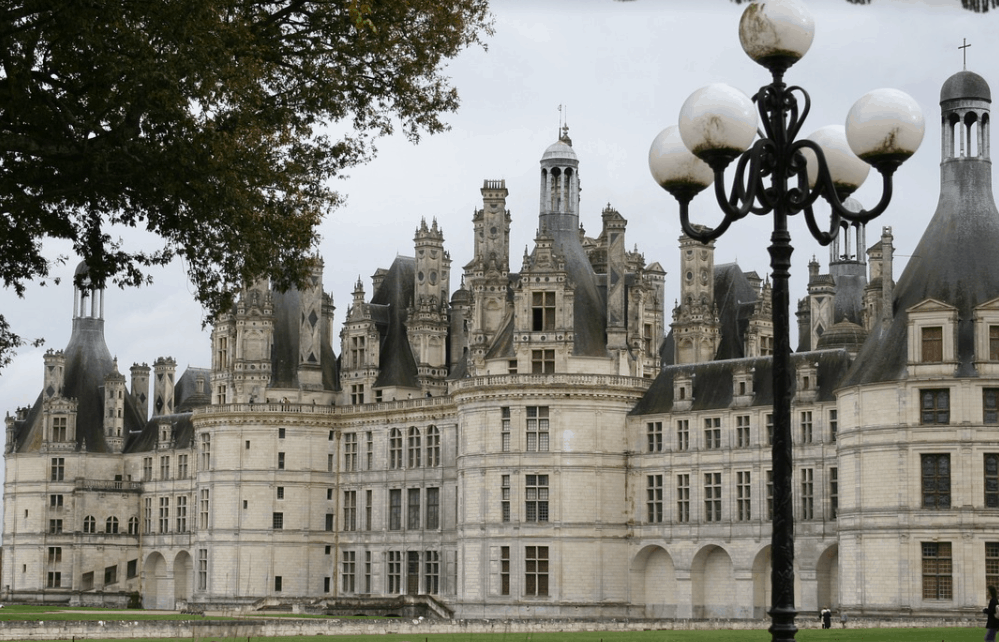
10. The castle was barely used because of its impractical location
One of the most peculiar facts about the Château de Chambord is that King Francis I barely spent 7 weeks at the château altogether. It wasn’t easy to heath the huge castle in the winter, and they didn’t even bother to furnish it.
When he came for short visits, he brought an entourage of over 2,000 people who simply brought everything he needed for his short hunting trips.
At least he had his Moment de Gloire when he was able to invite his arch-rival, Holy Roman Emperor Charles V, at his château and show off his wealth.
Did he really build this massive castle for this trivial reason?
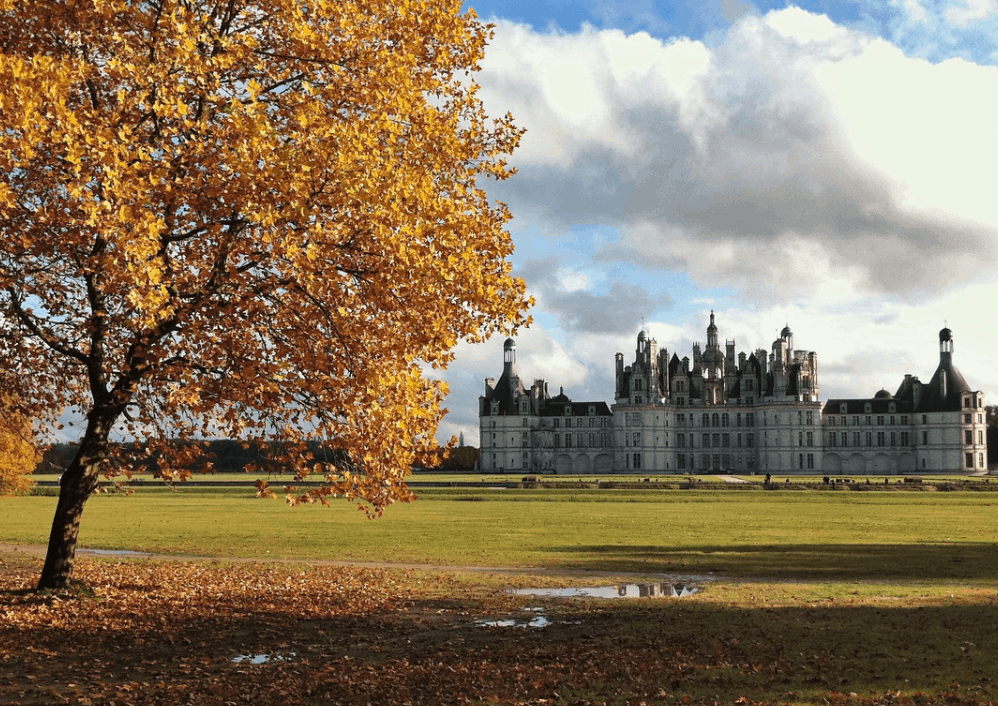
11. It has been French state property since 1930
The history of the castle following King Francis I’s death is rather sad because it hasn’t been a consistent residence of anybody for more than a decade at best. It immediately fell into disuse and was basically abandoned for the first 80 years until Louis XIV spent some money to renovate it and build a huge 1,200-horse stable.
He used the castle the same way as King Francis I and barely spent a few weeks there every year until he completely abandoned it in 1685 and spent most of his time at the Palace of Versailles.
To make things even worse, the castle was completely stripped and even timber from floors was demolished to be sold during the French Revolution. The wooden doors were even used to heat the rooms during the sale.
It wasn’t until the year 1930, when it came into the hands of the French State, that the château found its true purpose, which was to become a popular tourist attraction after a serious renovation.

12. It housed some of the most famous works of art during World War II
The château got a completely different purpose during World War II because, from 1939 onwards, some of the most famous works of art from the Louvre Museum and other popular museums in France were stored there.
These included some of the most famous works of art in the world such as the Mona Lisa and the Venus de Milo!

13. The entire area around the castle was flooded in 2016
One of the main rivers in the area called the Cosson, which is a tributary of the Loire, flooded the entire area of the château back in 2016 after an extended period of heavy rain. The immense wall that surrounds the massive compound of the castle was breached at several points.
Luckily, the château is located on a slightly elevated location so it remained completely undamaged by the flood!

14. The castle has influenced several other buildings
The unique design of the Château de Chambord has been a major influence in several buildings all across Europe. This includes for example the Schwerin Castle in Germany, which was built between 1845 and 1857.
In the United Kingdom, this includes the Founder’s Building at Royal Holloway at the University of London and the main building of Fettes College in Edinburgh.
One of the most prominent examples of the château influencing the design of another structure can be found at a country house in Buckinghamshire named Waddesdon Manor, which was built between 1874 and 1889 and features the same design and a similar staircase as the one found at Chambord as well!

15. Château de Chambord is visited by nearly a million people every year
The château has become one of the most popular tourist attractions in the area and is visited by nearly a million people every year. Its remarkable architecture and peculiar history make it one of the must-visit castles in Europe!
